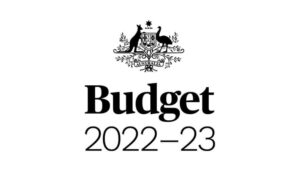
The legislation for the JobKeeper Payment received Royal Assent on Thursday, 9 April 2020. The Rules regarding the operation and implementation of the JobKeeper Payment have also been released by Treasury.
Broadly, eligible businesses that elect to participate will receive a payment of $1,500 per fortnight per eligible employee to support the people they employed as at 1 March 2020 who are retained in their employment.
We have summarised the application of the JobKeeper payment below. Please do not hesitate to contact us if you have any questions about the application of the JobKeeper payment to your business.
(Please note, the summary below does not address business sole traders and owner/operators. We have a separate post regarding owner/operators here.)
(Please also note, our summary below does not address the requirements of the JobKeeper Payment for businesses with a turnover in excess of $1 billion nor not-for-profit entities. If you would like specific advice in relation to these structures, please contact us.)
Eligibility
An employer will be eligible to participate in the JobKeeper Payment program where:
- On 1 March 2020, they were carrying on a business in Australia; AND
- They satisfied the decline in turnover test or the alternative decline in turnover test; AND
- They have eligible employees; AND
- They satisfy the $1,500 wage condition for their eligible employees; AND
- They have provided notification to the ATO that they are electing to participate in the JobKeeper Scheme; AND
- They have given the ATO notification about eligible employees and wage payments for the fortnight (including details of their employees); AND
- They have not notified the ATO that they no longer wish to participate in the scheme.
Decline in Turnover Test (30% decline)
The entity must show that they have had a decline in their turnover of at least 30% before they can be entitled to the JobKeeper Payment.
Once the test is satisfied, there is no requirement to retest in later periods. If you do not qualify for the JobKeeper Payment in your first test period, you can test in later months to see if you meet the test.
Test periods
You can calculate the decline in turnover based on a month or a quarter. The employer can choose the relevant comparison period.
The relevant testing periods are:
Monthly test periods
- March 2020
- April 2020
- May 2020
- June 2020
- July 2020
- August 2020
- September 2020
Quarterly test periods
- 1 April 2020 to 30 June 2020
- 1 July 2020 to 30 September 2020
Nguyen Industries assesses its eligibility for JobKeeper payments on 3 July 2020 based on a projected GST turnover for the quarter beginning on 1 July 2020 of $80 million from its business activities. The corresponding period is the quarter beginning 1 July 2019 for which it had a current GST turnover of $100 million. The July 2020 quarter turnover falls short of the July 2019 quarter turnover by $20 million which is 20% of the July 2019 quarter turnover. This does not exceed the specified percentage of 30%. Nguyen Industries does not satisfy the Decline in Turnover Test.
Alternative Decline in Turnover Test
The Alternative Decline in Turnover Test applies if there is not an appropriate relevant comparison period in 2019.
This may be the case of a new business, started for example in January 2020, or a business that made a business acquisition in 2020. In both examples, the basic test may not accurately reflect the downturn in activity that the business has suffered.
Where the Tax Commissioner is satisfied that there is no such comparison period in 2019, or it is not an appropriate relevant comparison period, the Commissioner may determine an alternative decline test.
Example – Satisfying the alternative decline in turnover test – comparison period not appropriate
Camille’s Farms carries on a farming business and retail flower sales in Australia. It was subject to a severe drought from 2018 until September 2019 that reduced the amount of flowers it could grow. It returned to normal crop output in January 2020. Its retail flower sales became significantly affected in March 2020.
It assesses its eligibility for JobKeeper payments on 3 July 2020 based on a projected GST turnover from its farming activities for the quarter beginning 1 July of $2,000,000. The corresponding period is the quarter beginning 1 July 2019 – a period in which Camille’s Farms was severely affected by drought. Because of the effects of the drought, Camille’s Farms had a much lower than usual turnover for the quarter beginning 1 July 2019 of $2,500,000. The July 2020 quarter turnover falls short of the July 2019 quarter turnover by $500,000, which is 25% of the July 2019 quarter turnover. This does not exceed the specified percentage of 30%, so the decline in turnover is not satisfied.
However, because of the effects of the drought on farming businesses, the Commissioner is satisfied that there is not an appropriate relevant comparison period for an entity that carried on a farming business. Instead, for these entities, the Commissioner determines an alternative test for which the relevant comparison period is the corresponding quarter in 2017. In the quarter beginning 1 July 2017, Camille’s Farms had a current GST turnover of $4,000,000. This represents a shortfall of 50% when compared to the projected GST turnover for the quarter beginning 1 July 2020. This exceeds the specified percentage of 30%, so the alternative decline in turnover test is satisfied.
Example – satisfying the alternative decline in turnover test – new business
Seb Tech is a start-up technology company that began carrying on a business on 1 October 2019 selling its product to a range of businesses including cafes and restaurants. Despite strong initial sales, its sales declined substantially from March 2020. It assesses its eligibility for JobKeeper payments on 15 April 2020 based on a projected GST turnover for April 2020 of $15,000 from its technology business. However, because Seb Tech did not begin to carry on a business until 1 October 2019, there is no corresponding period in 2019 that applies.
As there is no corresponding comparison period in 2019, the Commissioner determines an alternative test under which the relevant comparison period is teh average of the actual GST turnover in all of the months in which the business was being carried on prior to the turnover test period.
In October 2019 to March 2020, Seb Tech had an average monthly GST turnover of $30,000. This represents a shortfall of 50% when compared to its projected GST turnover for April 2020 of $15,000. This exceeds the specified percentage of 30%, so the alternative decline in turnover is satisfied.
Contrived arrangements
If an employer deliberately enters into contrived arrangements with the sole or dominant purpose of reducing their turnover in order to gain access to JobKeeper payments or increase the amount of JobKeeper payments, they will not be entitled to the payment or increased payment and general interest charge will apply to the overpayment.
Administrative and criminal penalties are also likely to apply to the parties involved in such schemes.
Eligible employees
An individual is an eligible employee if:
- the individual is employed by the entity at any time during the fortnight in which the employer is seeking the JobKeeper payment;
- on 1 March 2020, the individual was:
- aged 16 years or over; and
- was an employee of the entity (not casual employee) or was a long term casual employee (employed on a regular and systematic basis for longer than 12 months as at 1 March 2020 – where the employee has a recurring work schedule or a reasonable expectation of ongoing work);
- was an Australian resident or tax resident and holder of a Subclass 444 (Special Category) visa.
- they (the employee) give a notice to the employer stating:
- they satisfy the above conditions on 1 March 2020;
- they agree to be nominated as an eligible employee for the employer for the JobKeeper payment
- they are not excluded from receiving the JobKeeper payment (see below)
- if they are a long term casual employee, they are not the employee of another entity
- they have not given notice to any other entity or the Commissioner to receive the JobKeeper payment
- they are not excluded from being an eligible employee – excluded employeers are those:
- receiving paid parental leave under the Paid Parental Leave Act 2010 (this does not extend to any employer-funded paid parental leave)
- receiving dad and partner pay
- totally incapacitated from work and receiving workers compensation payments.
Testing and documentation
In summary, employers, you will need to:
- Test your employees’ eligibility for the JobKeeper payment at:
- 1 March 2020
- At a point during each and every fortnight in which you are seeking to pay the JobKeeper Payment
- Give your employees notification that you are claiming the JobKeeper payment for them.
- Receive notification from your employees confirming they are eligible.
You will need to satisfy this for each employee that you are seeking the JobKeeper payment.
Where an employee has been terminated after 1 March 2020 and the person is rehired, they are eligible for the JobKeeper payment (as they were an employee at 1 March 2020 and an employee during the fortnight the JobKeeper payment is claimed – regardless of the fact they were terminated in the interim period).
A person who is stood down or is on leave is considered to be an employee of their employer under the Fair Work Act 2009 and for the purposes of the JobKeeper payment.
If the employment relationship ends, the employee will not be able to have another employer qualify for the JobKeeper payments in respect of their new employment.
** We recommend having a checklist to determine the eligibility of each employee and keeping this on file together with the relevant nomination forms.
Overpayment from more than one nomination
If an overpayment results from an individual fraudulently nominating with more than one entity, the individual may be jointly and severally liable to pay back the overpayment and any general interest charge on the overpayment.
Paying JobKeeper wage - $1,500 per fortnight
The employer will satisfy the wage condition for an employee if they pay an amount equal to or greater than $1,500 for each JobKeeper fortnight.
This includes:
- Amounts paid in the fortnight by wage of salary, wages, commission, bonus or allowances;
- Amounts withheld under the Tax Administration Act (including PAYG withholding, HECS)
- Amounts contributed to super under a salary sacrificing arrangement;
- Other amounts dealt with in a way agreed to by the individual (eg. amounts part of a salary sacrificing arrangement).
The requirement is that the payment must be at least $1,500 regardless of whether the employee ordinarily receives more or less than that amount.
For example, if an employee:
- ordinarily receives $1,500 or more in income per fortnight before PAYG withholding and other salary sacrificed amounts, and their employment arrangements do not change, they will continue to receive their regular income according to their workplace arrangements. The JobKeeper payment will assist the employer to continue operating by subsidising all or part of the income of the employee;
- ordinarily receives less than $1,500 in income per fortnight before PAYG withholding and other salary sacrificed amounts, the employer must pay the employee at least $1,500 per fortnight (subject to PAYG withholding);
- has been stood down, the employer must pay the employee at least $1,500 per fortnight, before PAYG withholding; or
- was employed on 1 March 2020, subsequently ceased employment with the employer, and then has been rehired by the same eligible employer, the employer must pay the employee at least $1,500 per fortnight, before PAYG withholding.
Superannuation
Employers will only need to make superannuation contributions for any amount payable to an employee in respect of their actual employment.
Example – earned wages less than $1,500
If the work actually done by an employee over a period entitled them to be paid $1,000 but the employer instead paid them $1,500, the employer will only be required to make superannuation contributions in relation to $1,000.
Example – earned wages more than $1,500
If an employee is entitled to be paid $2,000 for their work, the employer will continue to make contributions in relation to that amount, irrespective of whether they were eligible to receive the JobKeeper payment in relation to that employee.
Example – employee stood down
Employers will not be required to make superannuation contributions for an employee who is stood down.
ATO notification - election to participate
An employer needs to notify the ATO in approved form of their election to participate in the scheme before the end of the fortnight (for the employer to be entitled to a payment for that fortnight).
For employers that wish to participate in the first or second JobKeeper payment (that is, the fortnights commencing 30 March 2020 and 13 April 2020), the employer has until the end of the second JobKeeper fortnight (ie. 26 April 2020) to provide the Commissioner with its election to participate.
(At the time of writing this 11:00am, Sunday 12 April 2020, the approved form had not yet been released. We will update this page once the approved form has been released.)
Fortnight Starting | Last Date for ATO Notification |
|---|---|
30 March 2020 | 26 April 2020 |
13 April 2020 | 26 April 2020 |
27 April 2020 | 10 May 2020 |
11 May 2020 | 24 May 2020 |
25 May 2020 | 7 June 2020 |
8 June 2020 | 21 June 2020 |
22 June 2020 | 5 July 2020 |
6 July 2020 | 19 July 2020 |
20 July 2020 | 2 August 2020 |
3 August 2020 | 16 August 2020 |
17 August 2020 | 30 August 2020 |
31 August 2020 | 13 September 2020 |
14 September 2020 | 27 September 2020 |
ATO notification - eligible employees
To be entitled to a JobKeeper payment for a fortnight, the employer must have provided the following information to the Commissioner in the approved form:
- the details of each eligible employee (for example, name, type of employment, citizenship/residency status); and
- other information about their entitlement to the JobKeeper payment.
If the information provided to the Commissioner does not subsequently change in the following JobKeeper fortnights, an employer is not required to provide the same information to the Commissioner again. However, where there is a change of circumstances, the employer must notify the Commissioner of this in the approved form before the end of the relevant JobKeeper fortnight.
Application and operation
Receipt of payment from ATO
Where the Tax Commissioner is satisfied that an employer is entitled to a JobKeeper payment, the Commissioner must pay $1,500 to the employer for each eligible employee. The Commissioner must generally make the payment no later than 14 days after the end of the calendar month in which the fortnight ends.
This means that, while entitlement to a payment is assessed in relation to a JobKeeper fortnight and the amount is paid to employees fortnightly, an entitled employer will only receive the JobKeeper payment from the Government monthly.
The payment will be made into the bank account nominated by the employer for its income tax returns.
** It is important for employers to check that its bank account details with the ATO are correct.
We also understand that the payment will not be used to offset any existing ATO liabilities of the entity.
Monthly reporting
Employers participating in the JobKeeper scheme will be required to report monthly to the ATO. The employer will be required to report:
- its current GST turnover for the reporting month; and
- its projected GST turnover for the following month.
This information does not affect an entity’s eligibility including in respect of the decline in turnover (which only needs to be satisfied once). It is intended to ensure that there is good information on which to assess the economic impact of the Coronavirus on a monthly basis across Australia.
DISCLAIMER: The information in this article is general in nature and is not a substitute for professional advice. Accordingly, neither TJN Accountants nor any member or employee of TJN Accountants accepts any responsibility for any loss, however caused, as a result of reliance on this general information. We recommend that our formal advice be sought before acting in any of the areas. The article is issued as a helpful guide to clients and for their private information. Therefore it should be regarded as confidential and not be made available to any person without our consent.

Jeanette has over 20 years experience as an accountant in public practice. She is a Chartered Accountant, registered tax agent and accredited SMSF Association advisor. When she is not helping business owners grow their empires, you will likely find her out running on the trails or at the gym. Book in to see Jeanette today.




